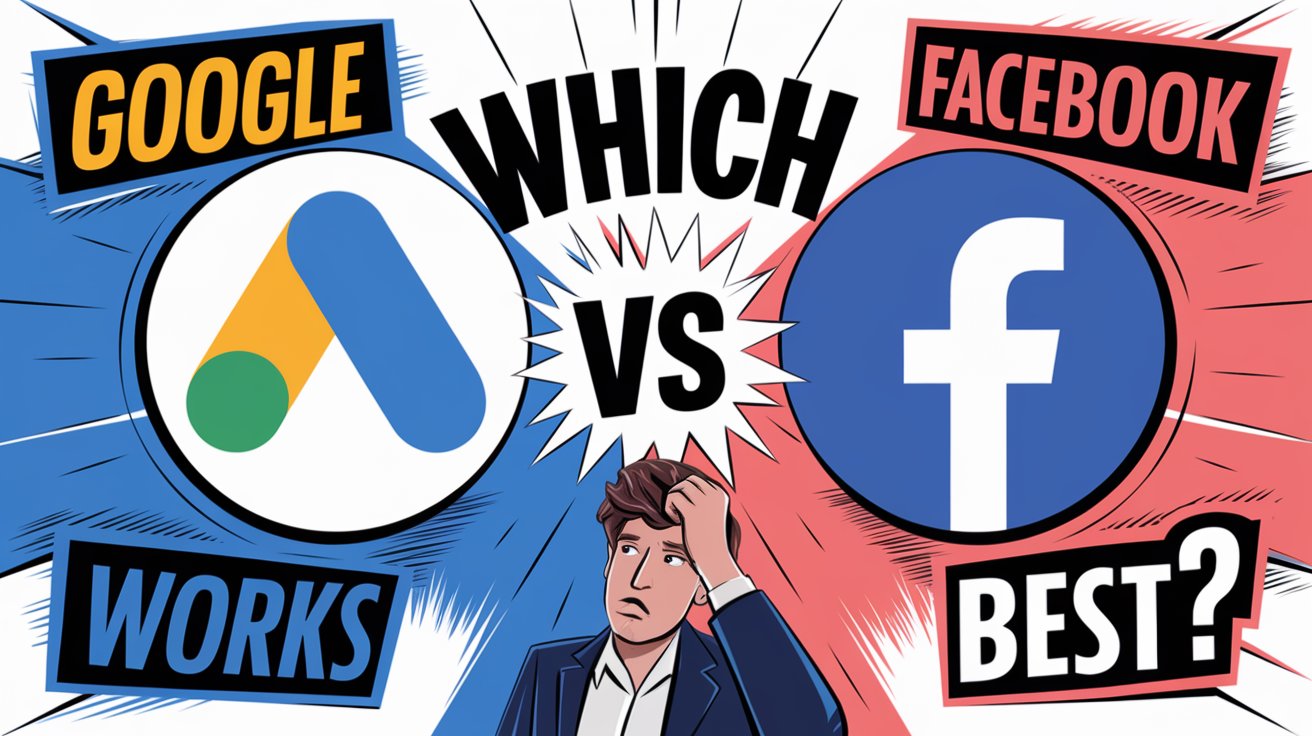In today’s digital world, businesses rely heavily on online advertising to reach their target audience, generate leads, and drive sales. Among the most powerful platforms, Google Ads and Facebook Ads stand out as dominant players. Both have unique advantages, but which one works best for your business?
Let’s break down the key differences, pros, and cons to help you decide.
Read More: Content Marketing Strategies for Small Businesses
Google Ads: Best for Intent-Based Marketing
Google Ads operates on a pay-per-click (PPC) model, where advertisers pay only when a user clicks on their ad. These ads appear on Google Search, YouTube, and other partner websites, making it a great tool for businesses looking to target customers who are actively searching for products or services.
Pros of Google Ads:
✅ High Intent Traffic – People using Google Search are already looking for a solution, making them more likely to convert into customers.
✅ Massive Reach – Google processes over 8.5 billion searches per day, offering unparalleled access to potential customers.
✅ Diverse Ad Formats – Includes Search Ads, Display Ads, Shopping Ads, and Video Ads, catering to different marketing needs.
✅ Strong ROI – With a well-optimized campaign, Google Ads can provide an excellent return on investment (ROI).
Cons of Google Ads:
❌ High Competition – Popular keywords can be costly, making it difficult for smaller businesses to compete with big brands.
❌ Complex Learning Curve – Requires expertise in keyword research, bidding strategies, and ad optimization.
Facebook Ads: Best for Audience Targeting & Brand Awareness
Facebook Ads work on a pay-per-impression (CPM) or pay-per-click (CPC) model. These ads appear on Facebook, Instagram, Messenger, and partner apps, providing businesses with powerful targeting options to reach specific audiences.
Pros of Facebook Ads:
✅ Advanced Audience Targeting – Advertisers can target users based on demographics, interests, behaviors, and past interactions.
✅ Engaging Ad Formats – Includes image ads, carousel ads, video ads, and interactive ads that enhance user engagement.
✅ Affordable CPC – Generally, Facebook Ads are more cost-effective compared to Google Ads, especially for brand awareness campaigns.
✅ Retargeting Features – Helps re-engage users who have previously interacted with your brand, increasing conversion rates.
Cons of Facebook Ads:
❌ Lower Purchase Intent – Unlike Google, where users actively search for products, Facebook users are often in a browsing mode, which may delay conversions.
❌ Algorithm Changes – Facebook frequently updates its advertising algorithm, which can impact ad performance.
Which One Works Best for You?
- Choose Google Ads if: You want to capture high-intent customers who are actively searching for your products or services.
- Choose Facebook Ads if: You want to build brand awareness, reach a highly specific audience, or retarget potential customers.
To maximize results, businesses can combine both Google Ads and Facebook Ads in their marketing strategy. Google can drive direct conversions, while Facebook can help nurture leads, increase brand recognition, and re-engage previous visitors.
Final Thoughts
There’s no one-size-fits-all answer when it comes to choosing between Google Ads and Facebook Ads. It depends on your goals, budget, and target audience. If your objective is immediate sales, Google Ads might be the better option. However, if you’re focused on brand awareness and long-term customer engagement, Facebook Ads can be more effective.
Would you like expert guidance in setting up an optimized advertising campaign for your business? Let’s get started today! 🚀
